From constant use, insufficient quality care inside the toilet, lime deposits and urinary stone gradually accumulate. Getting rid of such complex pollution the first time is not easy. To eliminate this nuisance, professional cleaning products, safe folk methods or potent chemicals are used.
Content
The reasons for the formation of plaque
Before you begin to deal with dirt in the toilet, you need to understand why they are formed. This will help you choose the right remedies.
Limescale is created by mineral compounds in the water of the aqueduct. They settle on the surface of chrome-plated parts and products made of ceramics or sanitary ware. The bulk of such deposits in the form of rust-colored spots is localized in areas where water flows during flushing. At the same time, the frequency of use of plumbing directly affects the rate of formation of such deposits.
Urinary stone is the formation of mineral compounds found in human urine. Entering the water, they combine with the elements in it and remain in the toilet in the form of a dense coating of an unattractive gray-yellow hue. Roughnesses and scratches on the bowl cover accelerate its deposition.
The main reason for the formation of various deposits is untimely cleaning. The more often you perform preventive cleaning of plumbing, the less dirt will accumulate on it and the longer it will remain clean.
Preparation for cleaning
For any method of cleaning the toilet, it is first freed from the liquid and only then is the selected agent applied. Household chemicals purchased in the store are used in strict accordance with the attached instructions. It is important to observe the dosage indicated on the package. For potent chemicals, before use, it is important to consider what material the sewer pipes are made of so as not to spoil them.
Before working, it is important to take care of your own safety. For this, the skin of the hands is protected with latex household gloves. To protect the respiratory system, wear a special mask or respirator.
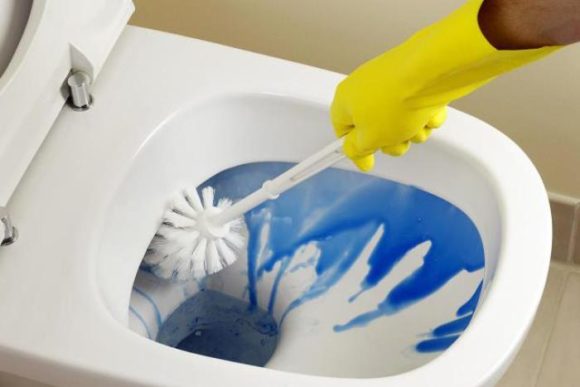
Folk remedies
Most home remedies do not harm human health and are safe for plumbing. They effectively remove small to medium dirt. With regular use, folk washing methods are quite capable of replacing professional household chemicals.
Vinegar Soda
When combined, these substances form a product with good efficiency, which will be able to clean the toilet from urinary stone and calcareous deposits:
- Table vinegar with a concentration of 9% is heated on a small fire to a temperature of +40 degrees.
- In a heated liquid add baking soda for 1 tbsp. l for every 200 ml.
- For greater effectiveness, a few drops of iodine are poured.
- Fill the bowl with a hissing liquid, after scooping up water from it.
- Soak toilet paper with the same liquid and push it under the rim of the bowl.
- Leave a tool to act all night.
- Clean up the remaining dirt with a brush.
- Wash off water repeatedly.
Lemon acid
Cleaning a plumbing with a lemon is one of the most popular budgetary methods. A few sachets of lemons are poured onto the moistened surface of the bowl, especially intensively applying funds to places where there is the most accumulation of dirt. This is best done in the evening, so that in a few hours all the contaminants dissolve. The next morning, the remaining deposits should be cleaned with a brush or a hard brush and washed off with water.
Citric acid effectively dissolves small impurities. Therefore, to destroy the thick coating will require several treatments.
White
Whiteness is a chlorine-based household bleach. It has an excellent disinfecting effect and effectively corrodes urinary stone. After scooping up water from the bowl, White is poured into it. To clean the walls of the bowl they are surrounded with old rags soaked in bleach. After 2-3 hours, rags must be removed and the remaining deposits cleaned with a stiff brush. Then they repeatedly drain water from the tank.
Baking soda
At home, to clean the toilet from urinary stone and plaque of small thickness can be baking soda. The powder is simply scattered over the surface of the bowl and left to work overnight. The next morning, the exfoliated coating is cleaned with a brush and flushed.
Coca Cola
This and other carbonated drinks perfectly dissolve plaque on the toilet bowl and blockages in the sewer pipes. To get rid of pollution, from the evening it is enough to pour a few bottles of Coca-Cola into the toilet and cover the lid. The next morning they let the water out of the tank, and wipe off the remaining dirt with a toilet brush.
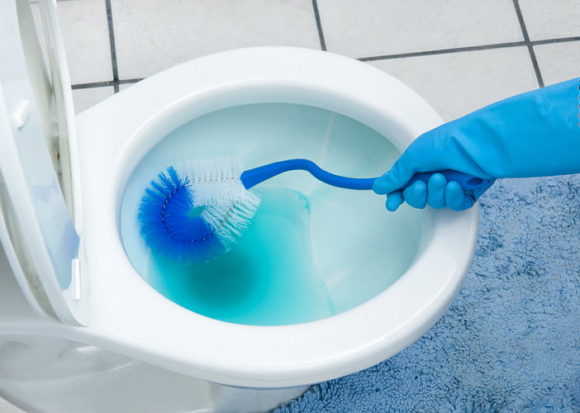
Professional household chemicals
Available folk remedies in combination with a toilet brush and rags can eliminate small deposits and dirt. But in order to clean the toilet from rust and plaque in this way, you need to spend a lot of effort and time. Household chemicals, which were developed specifically for this purpose, deal much more effectively with dirt.
Such products have convenient packaging, with which you can apply a cleanser even in hard to reach places. Use drugs only for their intended purpose with the exact observance of the dosage.
The following drugs are most effective:
- Comet gel 7 days of purity has a composition based on sulfuric acid. Thanks to this, it perfectly eliminates even difficult to remove plaque. After using it, the purity of the toilet remains for a long time.
- Gel Domestos is thick. It contains hydrochloric acid. After a short time, the product dissolves the urinary stone and deposits.
- The drug Silite also contains hydrochloric acid in the composition. It is quite thick and holds well on the walls of the toilet, has a strong cleansing effect.
- Toilet duckling is a toilet cleaner that was one of the first on the Russian market. The unusual design of the bottle makes it easy to apply the substance even in hard to reach places. The drug with hydrochloric acid dissolves pollution well.
- Gel Sanox Ultra in its composition has sulfamic and oxalic acids. Thanks to them, it has an excellent cleaning effect and does not spoil the plumbing.
The use of potent acids to eliminate plaque
For severely neglected plumbing with a thick layer of plaque and urinary stone, safe folk remedies or professional household chemicals are not enough to get a good result. In this case, potent chemicals are used.
Acids for cleaning plumbing are used only as a last resort. When using them, they strictly adhere to the recommended dose and time of exposure. Otherwise, there is a high probability of spoiling the plumbing and damaging the sewer pipes.
Oxalic acid
This is a drug of organic origin, has moderate toxicity. Oxalic acid copes well with a urinary stone and makes plumbing white.It can be found on sale in a hardware store in the form of powder.
Order of use:
- The acid is applied to a moistened rag.
- Wipe contaminated areas thoroughly.
- For severe impurities, pour powder on the spots and leave for 1 hour.
- Brush off the remaining plaque and wash it off several times with water.
Orthophosphoric acid
The drug is a substance of inorganic origin, has a cleaning effect of medium strength. Phosphoric acid is used to remove urinary stone, and also pour it into the tank to get rid of rust. The main advantage of this tool is that it is safe for rubber and plastic parts.
Phosphoric acid in a volume of 100 ml is poured into water in a tank or poured directly into the toilet bowl. After a quarter of an hour, the water is drained and the remaining dirt is cleaned with a brush.
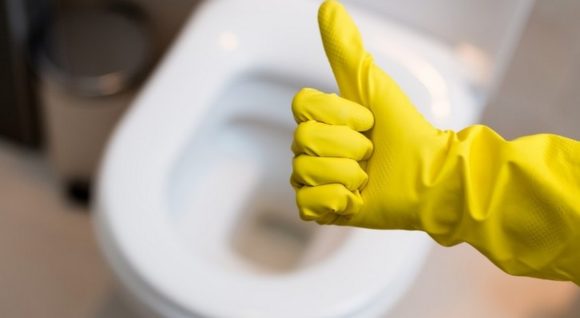
Hydrochloric acid
This drug is highly effective and very toxic. Therefore, it must be used with extreme caution. It is dangerous to even inhale vapors of hydrochloric acid. Therefore, before use, all personal protective equipment must be used, including thick rubber gloves, a respirator and glasses.
The liquid is poured over the walls of the bowl and poured into a drain hole of the toilet bowl in a volume of 100 ml. After 10 minutes, rinse with plenty of water and clean the remaining contaminants with a brush.
Hydrochloric acid cannot be cleaned if the sewage system is made of PVC. Pipes will inevitably be damaged.
Electrolyte
The electrolyte for car batteries is a very corrosive liquid based on sulfuric acid. It is undesirable to use it to clean the toilet. In the most extreme case, you can use this method of cleaning if the sewer is made of cast iron.
Apply this drug in the same way as hydrochloric acid. When applying, it is important not to spray the liquid so that it does not get on the body. High probability of chemical burn.
Heavy pollution prevention
In addition to timely cleaning of the toilet, preventive drugs are used to prevent the formation of dirt, which are sold in all departments. It can be special tablets that are placed in the drain tank. They help get rid of rust and prevent its formation. All kinds of pads on the walls of the toilet are also useful. When washing off, they dissolve and prevent the subsidence of mineral compounds.
Also helps prevent severe contamination by controlling the amount of water to flush. You can use tanks with a special drain design for this purpose, which allows you to drain a smaller volume of liquid if necessary. This not only contributes to the cleanliness of the tank and toilet, but also reduces the cost of utilities.
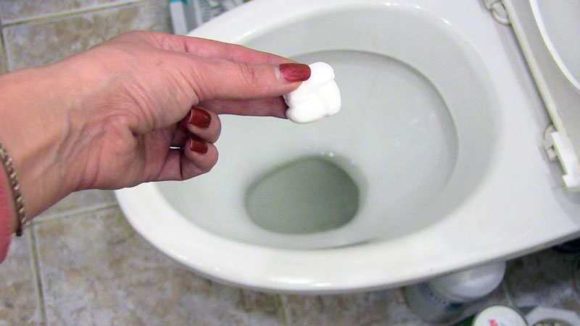
How to care for plumbing
To rid yourself of the removal of complex contaminants, it is important to use a toilet brush with each drain. Also, the constant use of household chemicals contributes to maintaining cleanliness.
It is important to eliminate all malfunctions in time. Plaque often appears due to a constantly leaking tank. Therefore, at the first sign of a leak, the tank is repaired, worn gaskets are replaced, or the drainage system is regulated.
Every week, the toilet is cleaned with household products. A special gel or cleaning powder will quickly eliminate fresh plaque and small formations of urinary stone.
Conclusion
To maintain constant cleanliness of plumbing, it is enough to do preventive cleaning on time, without delaying cleaning for a long time. So, you can avoid the tedious wiping of old deposits and keep the whiteness and luster of the toilet for a long time.

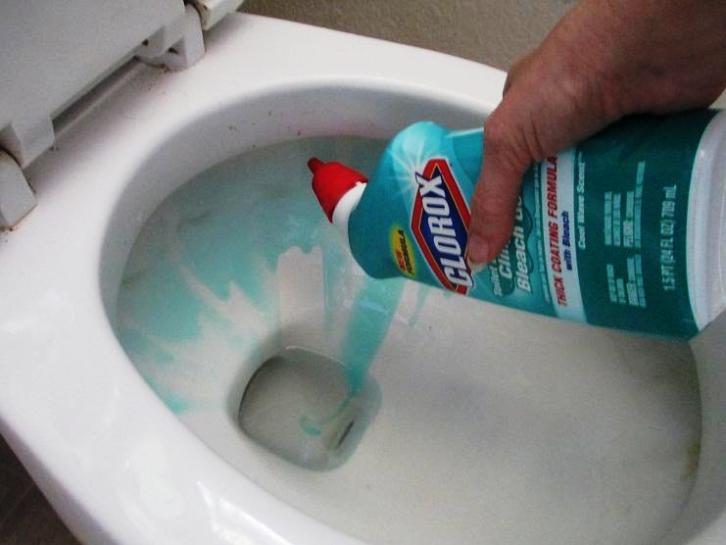



Alas, no comments yet. Be the first!